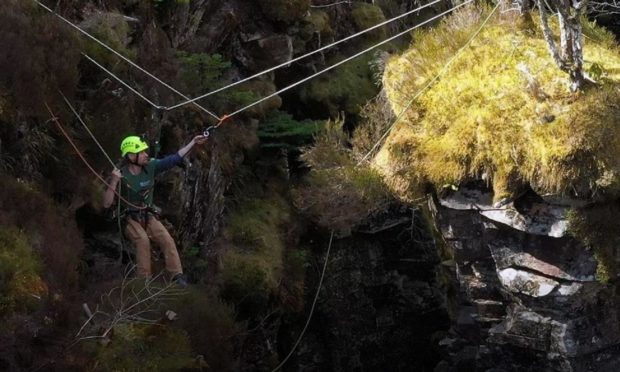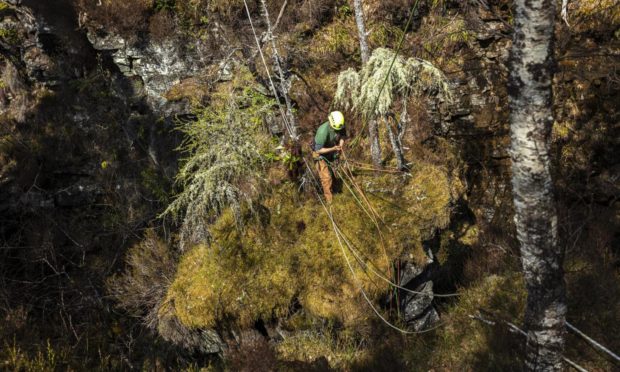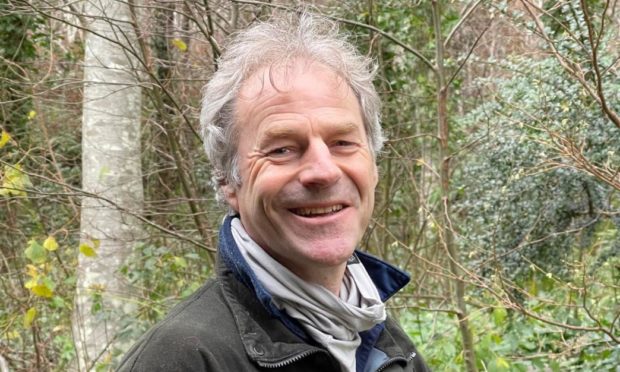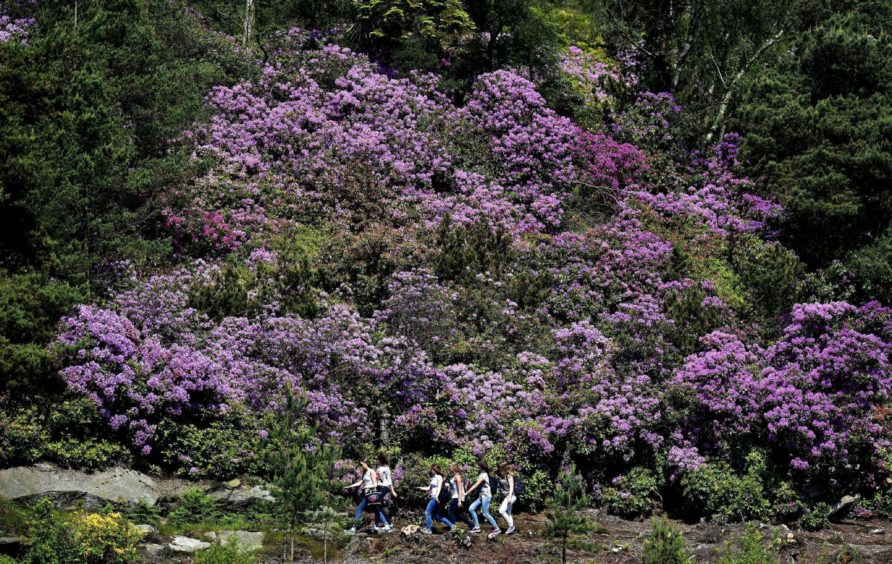As the weather improves and the days get longer it’s nice to get outside for a bit of gardening.
But would you fancy doing some pruning on a rock stack with a drop of more than 100ft?
An intrepid team is helping to remove invasive rhododendron ponticum from an inaccessible part of Corrieshalloch Gorge in Wester Ross.
Workers from Rope Access Scotland erected a zip wire to access the stack where rhododendron bushes were growing and preventing other plants from thriving.
Rope access worker John Finlayson was filmed carrying out the operation in the National Nature Reserve by Ullapool-based drone operator Steven Gourley.
It is part of the National Trust for Scotland’s (NTS) Project Wipeout, a nationwide effort to eradicate non-native plant species.
A tremendous effort to protect habitat
Rob Dewar, NTS natural heritage adviser, said: “We have removed most of the invasive rhododendron from the gorge in a tremendous effort to protect the natural habitat of this wonderful place.
“This spectacular operation shows the measures we will go to conserve our properties. It is a necessary operation to prevent further spread of seed into the most inaccessible areas of the gorge.
“The removal of rhododendron also ensures our visitors can gain the most impressive views of all its features including the beautiful diversity of native flora.”
Mr Dewar said this phase of the work is removing the most inaccessible invasive species to prevent them growing further.
“If you have these bushes flowering on awkward sites they are going to drop their seeds into even more awkward sites. It then becomes a really difficult and expensive process.
‘We want to keep it as nature intended’
“It’s essential conservation work and preventing biodiversity loss. Rhododendron pose one of the biggest threats in the Highlands. It loves a moist climate and the gorge provides that perfectly.
“If we did not do anything about the rhododendron, in years to come it would just be a big, dark, green jungle. So we want to keep it as nature intended.”
The gorge is a Site of Special Scientific Interest (SSSI) for its geomorphological features, including the rock stack in the higher reaches of the landmark.
It has been created by the melt waters from previous ice caps eroding the vertical joints in the rock. It is one feature of the most spectacular notch gorge in Scotland.
Last month plans were lodged for a new visitor centre and path network at Corrieshalloch Gorge national nature reserve. More than 100,000 people visit the site every year.
What’s so bad about rhododendron?
The plant is responsible for the destruction of many native habitats and the abandonment of land throughout Britain.
Where conditions are suitable, it will out-compete most native plants.
It will grow to many times the height of a person, allowing very little light to penetrate through its thick leaf canopy.
This effectively eliminates other competing native plant species which are unable to grow due to insufficient light.
This can then lead to the loss of some native animals.



